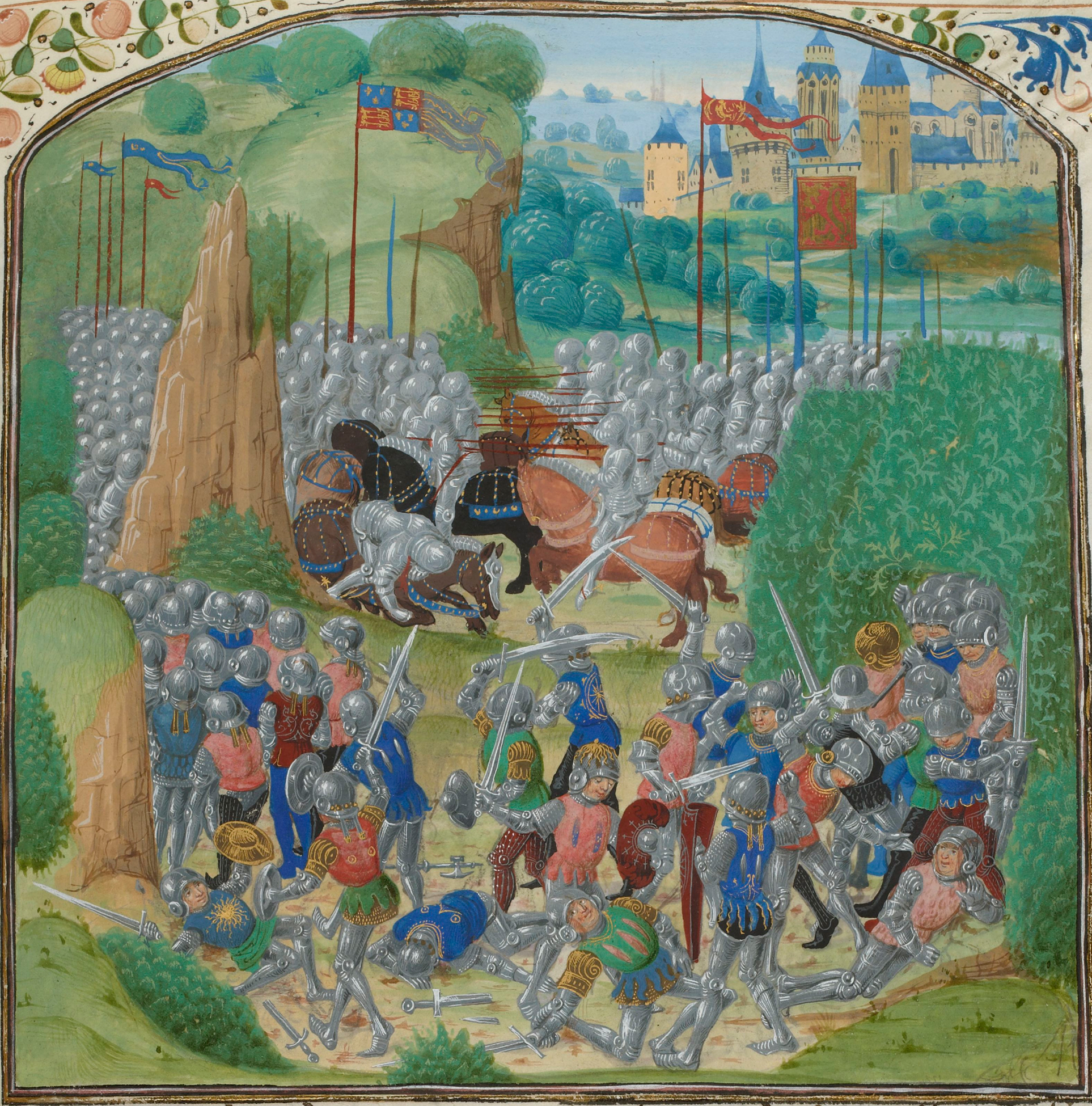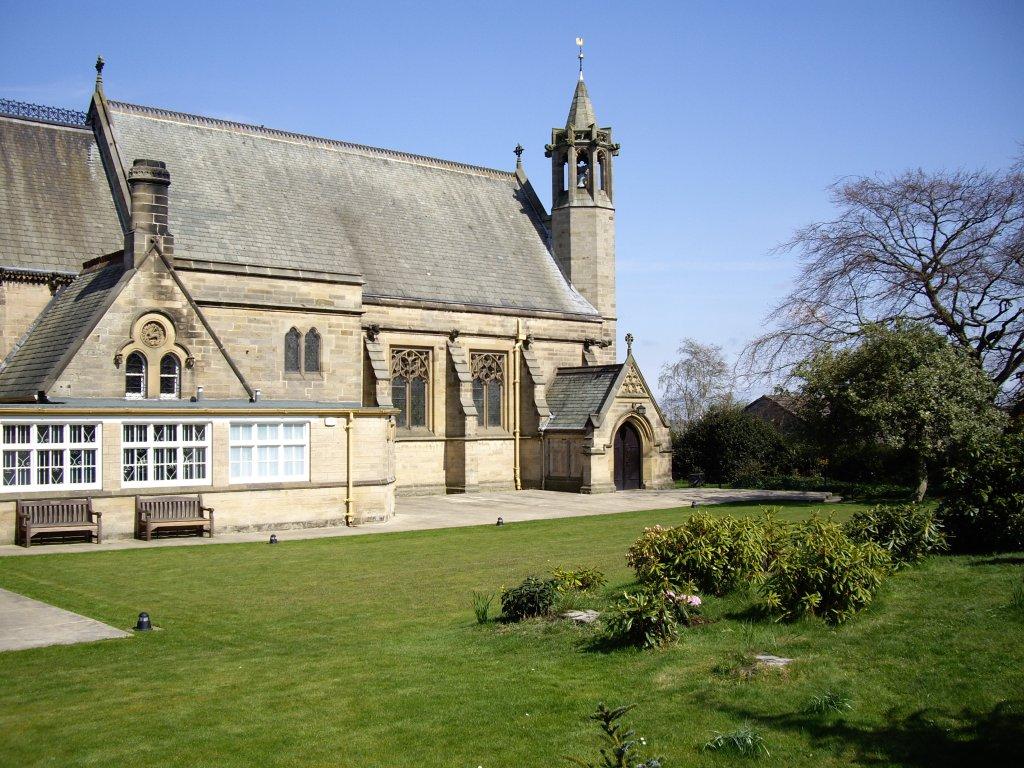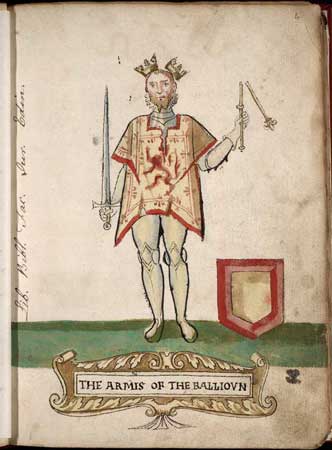|
Umfraville
The Umfraville family were Anglo-Norman landowners, administrators and soldiers who were prominent from about 1120 to 1437 on the northern border of England, where they held the strategic lordships of Prudhoe and Redesdale in Northumberland. They held, for the English Crown, Tynedale to the Cumbrian Border up to the border with Scotland. It was in Scotland where the Umfravilles reached the pinnacle of their power. As a prominent border landowning family, it is likely that they were invited, along with dozens of other Anglo-Norman knights, administrators, and warlords to settle in Scotland by David I of Scotland as part of his policy of modernising Scotland by introducing feudalism, now known as the Davidian Revolution by historians. The Umfravilles, who were granted lands in Stirlingshire, were by the third generation established as members of Court and for three generations became Mormaer of Angus through marriage into the Scots-Gaelic aristocracy. The split loyalties between ... [...More Info...] [...Related Items...] OR: [Wikipedia] [Google] [Baidu] |
Robert De Umfraville
Sir Robert de Umfraville Order of the Garter, KG, Lord of Redesdale ( 1363 – 1437) was a knight in England in the Late Middle Ages, late-medieval England who took part in the later stages of the Hundred Years' War, particularly against Kingdom of Scotland, Scotland. The Umfraville, de Umfraville family had been influential in north of England, northeast England for centuries and also held major estates in Yorkshire. His ancestors were mormaers of Angus, and his nephew married into the House of Percy, Percies, a powerful local Scottish Marches, marcher family with whom de Umfraville was closely associated. Much of Sir Robert's career continued on the same path as his ancestors, being primarily focused on defending the Anglo-Scottish border, border with Scotland, which had been in a state of near-permanent warfare since the late thirteenth century. Robert de Umfraville fought under three English kings. Beginning his career under Richard II of England, Richard II, he probably fou ... [...More Info...] [...Related Items...] OR: [Wikipedia] [Google] [Baidu] |
Earl Of Angus
The Mormaer or Earl of Angus was the ruler of the medieval Scottish Provinces of Scotland, province of Angus, Scotland, Angus. The title, in the Peerage of Scotland, is held by the Duke of Hamilton, and is used as a courtesy title for the eldest son of the Duke's eldest son. History Mormaers Angus is one of the oldest attested mormaerdoms, with the earliest attested mormaer, Dubacan of Angus, known to have lived in the early 10th century, as recorded in the ''Chronicle of the Kings of Alba''. Angus was, according to the doubtful and legendary text ''de Situ Albanie'', one of the seven original mormaerdoms of the Pictish kingdom of Alba, said to have been occupied by seven brothers, of whom Angus (Oengus) was the eldest. Despite this, the mormaers of Angus are among the most obscure of all. After the death of Mormaer Maol Chaluim of Angus, Maol Chaluim, in probably about 1240, the mormaerdom passed through the marriage of his daughter Matilda, Countess of Angus, Matilda, to t ... [...More Info...] [...Related Items...] OR: [Wikipedia] [Google] [Baidu] |
Prudhoe Castle
Prudhoe Castle is a ruined medieval English castle situated on the south bank of the River Tyne at Prudhoe, Northumberland, England. It is a Scheduled Ancient Monument and a Grade I listed building. The Umfravilles Archaeological excavations have shown that the first castle on the site was a Norman motte and bailey, built sometime in the mid 11th century. Following the Norman Conquest of England, the Umfraville family took over control of the castle. Robert d’Umfraville was formally granted the barony of Prudhoe by Henry I but it is likely that the Umfravilles had already been granted Prudhoe in the closing years of the 11th century. The Umfravilles (probably Robert) initially replaced the wooden palisade with a massive rampart of clay and stones and subsequently constructed a stone curtain wall and gatehouse. In 1173 William the Lion of Scotland invaded the North East to claim the earldom of Northumberland. The head of the Umfraville family, Odinel II, refused to suppor ... [...More Info...] [...Related Items...] OR: [Wikipedia] [Google] [Baidu] |
Prudhoe
Prudhoe ( ) is a town and civil parish in the south of Northumberland, England. It is west of Newcastle upon Tyne and situated on a steep, north-facing hill on the south bank of the River Tyne. Prudhoe had a population of 11,675 at the 2011 census, making it the second largest town in the Tyne Valley after Hexham. Nearby villages include Ovingham, Ovington, Wylam, Stocksfield, Hedley on the Hill and Mickley. History The name derives from the Anglo-Saxon personal name Prud (from , meaning 'proud') and ''hoe'' or ''haugh'', 'a spur of land'. There has been a castle at Prudhoe since ancient times, when England was at war with Scotland. The area now known as Castlefields was a fruit orchard, and the Scots were rumoured to have burnt this orchard while attempting to capture Prudhoe Castle. The castle, originally owned by the d'Umfraville family, then the Percys and now English Heritage, is considered to be the only medieval fortification in Northumberland never to h ... [...More Info...] [...Related Items...] OR: [Wikipedia] [Google] [Baidu] |
Anglo-Normans
The Anglo-Normans (, ) were the medieval ruling class in the Kingdom of England following the Norman Conquest. They were primarily a combination of Normans, Bretons, Flemings, French people, Frenchmen, Anglo-Saxons and Celtic Britons. After the conquest the victorious Normans formed a ruling class in England, distinct from (although intermarrying with) the native Anglo-Saxon and Celtic populations. Over time, their language evolved from the continental Old Norman to the distinct Anglo-Norman language. Anglo-Normans quickly established control over all of England, as well as Norman invasion of Wales, parts of Wales (the Cambro-Normans, Welsh-Normans). After 1130, parts of southern and eastern Scotland came under Anglo-Norman rule (the Scoto-Norman, Scots-Normans), in return for their support of David I of Scotland#Government and feudalism, David I's conquest. The Anglo-Norman invasion of Ireland from 1169 saw Anglo-Normans and Cambro-Normans conquer swaths of Ireland, becomi ... [...More Info...] [...Related Items...] OR: [Wikipedia] [Google] [Baidu] |
Amfreville, Calvados
Amfreville () is a Communes of France, commune in the Calvados (department), Calvados Departments of France, department in the Normandy (administrative region), Normandy Regions of France, region of north-western France. Geography Amfreville is located some 25 km north-west of Caen and 1 km south-east of Ouistreham mostly on the right bank of the Orne (river), Orne with a small portion on the left bank. It can be accessed by the D514 from Sallenelles in the north passing through the west of the commune then continuing south then west to Bénouville, Calvados, Bénouville. Access to the village is by the D37B from Breville-les-Monts in the south-east and continuing through the village north to Sallenelles. There is also the D236 going east from the village to Bavent. There are several hamlets apart from the village: Hameau Oger and Hameau La Rue form a continuous urban area with the main village and the hamlets of La Basse Ecarde and La Haute Ecarde are to the west. The r ... [...More Info...] [...Related Items...] OR: [Wikipedia] [Google] [Baidu] |
Harbottle Castle
Harbottle Castle is a ruined medieval castle situated at the west end of the village of Harbottle, Northumberland, England, west-north-west of Rothbury overlooking the River Coquet. It is a Scheduled Ancient Monument and a Grade I listed building. It is thought that the mound on which the keep stands was a site used by the ancient Britons, and that in Anglian times, there was a stronghold on the site held by Mildred, son of Ackman. The present castle was built about 1160 by the Umfraville family at the request of King Henry II on land awarded to them following the Norman Conquest, presumably as a defence against the Scots. Not long after its erection, in 1174, it was taken by the Scots and was then rebuilt more strongly. In 1296, it was besieged by Robert de Ros, and some 40,000 men, but the siege by the supporters of John Balliol was withstood. In the 1310s, Robert the Bruce captured the castle. It was restored in 1336, but was in ruins again by 1351. It was repaired ... [...More Info...] [...Related Items...] OR: [Wikipedia] [Google] [Baidu] |
Wars Of Scottish Independence
The Wars of Scottish Independence were a series of military campaigns fought between the Kingdom of Scotland and the Kingdom of England in the late 13th and 14th centuries. The First War (1296–1328) began with the English invasion of Scotland in 1296 and ended with the signing of the Treaty of Edinburgh–Northampton in 1328. The Second War (1332–1357) began with the English-supported invasion by Edward Balliol and the "Disinherited" in 1332 and ended in 1357 with the signing of the Treaty of Berwick. The wars were part of a great crisis for Scotland, and the period became one of the most defining times in its history. At the end of both wars, Scotland retained its status as an independent state. The wars were important for other reasons, such as the emergence of the longbow as a key weapon in medieval warfare. The First War of Independence: 1296–1328 Background King Alexander III of Scotland died in 1286, leaving his three-year-old granddaughter Margaret, Maid ... [...More Info...] [...Related Items...] OR: [Wikipedia] [Google] [Baidu] |
Redesdale
Redesdale is a valley in western Northumberland, England. It is formed by the River Rede, which rises in the Cheviots and flows down to join the North Tyne at Redesmouth. Redesdale is traversed by the A68 trunk road, which enters Scotland via Carter Bar at the head of the valley. Redesdale contains the settlements of Elsdon, Otterburn, Rochester, and Byrness. Otterburn is the site of a British Army installation, Otterburn Training Area. A portion of Redesdale to the west and north of Otterburn forms part of Northumberland National Park and includes the Redesdale Forest, the northernmost part of Kielder Forest. History This valley has historically served as an important route into Scotland, and has seen conflict since the time of the Roman Empire. After the Norman Conquest of 1066, the Norman noble family Umfraville gained lands in the area and were the first ''Lords of Redesdale''. In 1388, Otterburn was the site of a historic battle between armies from the king ... [...More Info...] [...Related Items...] OR: [Wikipedia] [Google] [Baidu] |
Scottish Lowlands
The Lowlands ( or , ; , ) is a cultural and historical region of Scotland. The region is characterised by its relatively flat or gently rolling terrain as opposed to the mountainous landscapes of the Scottish Highlands. This area includes cities like Edinburgh and Glasgow and is known for its fertile farmland, historic sites, and urban centres. It is the more populous and industrialised part of Scotland compared to the sparsely populated Highlands. Culturally, the Lowlands and the Scottish Highlands, Highlands diverged from the Late Middle Ages into the modern period, when Scots language, Lowland Scots replaced Scottish Gaelic throughout most of the Lowlands. Geography Geographically, Scotland is divided into three distinct areas: the Scottish Highlands, Highlands, the Central plain (Central Belt, in the Central Lowlands), and the Southern Uplands. The Lowlands cover roughly the latter two. The northeast plain is also "low-land", both geographically and culturally, but in ... [...More Info...] [...Related Items...] OR: [Wikipedia] [Google] [Baidu] |
Offranville
Offranville () is a commune in the Seine-Maritime department in the Normandy region in north-western France. Geography A small town of farming and light industry situated in the Pays de Caux at the junction of the D55, the D54 and the D237 roads, some south-west of Dieppe. The river Scie forms most of the commune's eastern border with Saint-Aubin-sur-Scie. Heraldry Population People Jacques-Émile Blanche (1861–1942), artist, lived and died here. Places of interest * The church of St.Ouen, dating from the sixteenth century, with a twisted spire. * A 1000-year-old yew tree, 7 metres (23 feet) in circumference. * Three châteaux and their parks. * The Jacques-Émile Blanche museum. Twin towns * Thurmaston, Leicestershire, United Kingdom See also *Communes of the Seine-Maritime department The following is a list of the 707 communes of the French department of Seine-Maritime. The communes cooperate in the following intercommunalities (as of 2025): [...More Info...] [...Related Items...] OR: [Wikipedia] [Google] [Baidu] |
Normandy
Normandy (; or ) is a geographical and cultural region in northwestern Europe, roughly coextensive with the historical Duchy of Normandy. Normandy comprises Normandy (administrative region), mainland Normandy (a part of France) and insular Normandy (mostly the British Channel Islands). It covers . Its population in 2017 was 3,499,280. The inhabitants of Normandy are known as Normans; the region is the historic homeland of the Norman language. Large settlements include Rouen, Caen, Le Havre and Cherbourg-en-Cotentin, Cherbourg. The cultural region of Normandy is roughly similar to the historical Duchy of Normandy, which includes small areas now part of the departments of Mayenne and Sarthe. The Channel Islands (French: ''Îles Anglo-Normandes'') are also historically part of Normandy; they cover and comprise two bailiwicks: Bailiwick of Guernsey, Guernsey and Jersey, which are British Crown Dependencies. Normandy's name comes from the settlement of the territory by Vikings ( ... [...More Info...] [...Related Items...] OR: [Wikipedia] [Google] [Baidu] |





